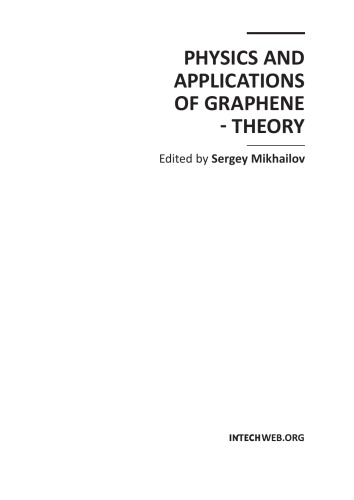

Most ebook files are in PDF format, so you can easily read them using various software such as Foxit Reader or directly on the Google Chrome browser.
Some ebook files are released by publishers in other formats such as .awz, .mobi, .epub, .fb2, etc. You may need to install specific software to read these formats on mobile/PC, such as Calibre.
Please read the tutorial at this link: https://ebookbell.com/faq
We offer FREE conversion to the popular formats you request; however, this may take some time. Therefore, right after payment, please email us, and we will try to provide the service as quickly as possible.
For some exceptional file formats or broken links (if any), please refrain from opening any disputes. Instead, email us first, and we will try to assist within a maximum of 6 hours.
EbookBell Team

0.0
0 reviews
ISBN 10: 9533071524
ISBN 13: 9789533071527
Author: Sergey Mikhailov
Part I: Fundamental Electronic Properties and Models
Part II: Defects, Edges, and Nanostructures
Part III: Transport and Response Phenomena
Part IV: Applications and Advanced Concepts (Theoretical Predictions)
physics and applications of graphene experiments
what are the applications of graphene
what are uses of graphene
applications of physics
physics and applications of graphene
Tags: Sergey Mikhailov, Physics, applications